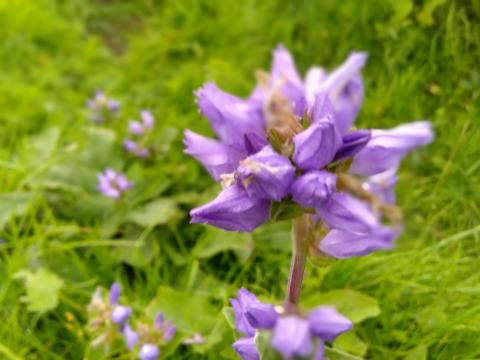Betony

Betony’s numbers have declined these past years. To we moderns, it’s a pretty enough flower, worthy of a second moment’s glance. To the ancients, it was a useful medicine. Master Gerard, the Tudor botanist said ‘It maketh a man to pisse well’ while Nicholas Culpeper stated that ‘...it preserves the liver and bodies of men from the danger of epidemical diseases...this is a precious herb.’ He added that it protects one ‘from witchcraft also’. This was a common belief, and a poem from 1400 declares:
At betonye I wyll be-gynne,
That many vertewys hath hym with-inne…
Who so betonye on him bere
Fro wykked sperytes it will him were.
The archaic English takes some reading, but the last line’s protection from wicked spirits is clear enough. Wilfrid Bonser quotes an Anglo-Saxon poem which claims the flower prevents ‘frightful nocturnal goblins and terrible sights and dreams’. If all this sounds rather pagan, the plant’s other name is Bishop’s Wort, wort referring to a plant with medicinal value.
I am sure that our gracious God secretly endowed many of His beautiful florae with remedies for our temporal relief. Although I am not planning to put the claims of our ancestors to the test, I have little doubt that Betony has some curative properties. From spiritual darkness, however, its powers are wholly ineffective. Only two roughly sawn beams from a tree, upon which the Creator Himself hung, can rescue us from wicked spirits and the enemy of our souls. The cross of Calvary is not as pretty as this little purple flower, but its healing powers are fantastically more powerful.
[Christ] humbled Himself and became obedient to the point of death, even the death of the cross. Phillipians 2:8
Of every pilgrim, it is said:
Hobgoblin nor foul fiend
Can daunt his spirit;
He knows he at the end,
Shall life inherit.
Then fancies flee away,
He'll fear not what men say;
He'll labour night and day,
to be a pilgrim.
-John Bunyan
- Log in to post comments


 Sunday Worship 10.45am & 6.00pm
Sunday Worship 10.45am & 6.00pm